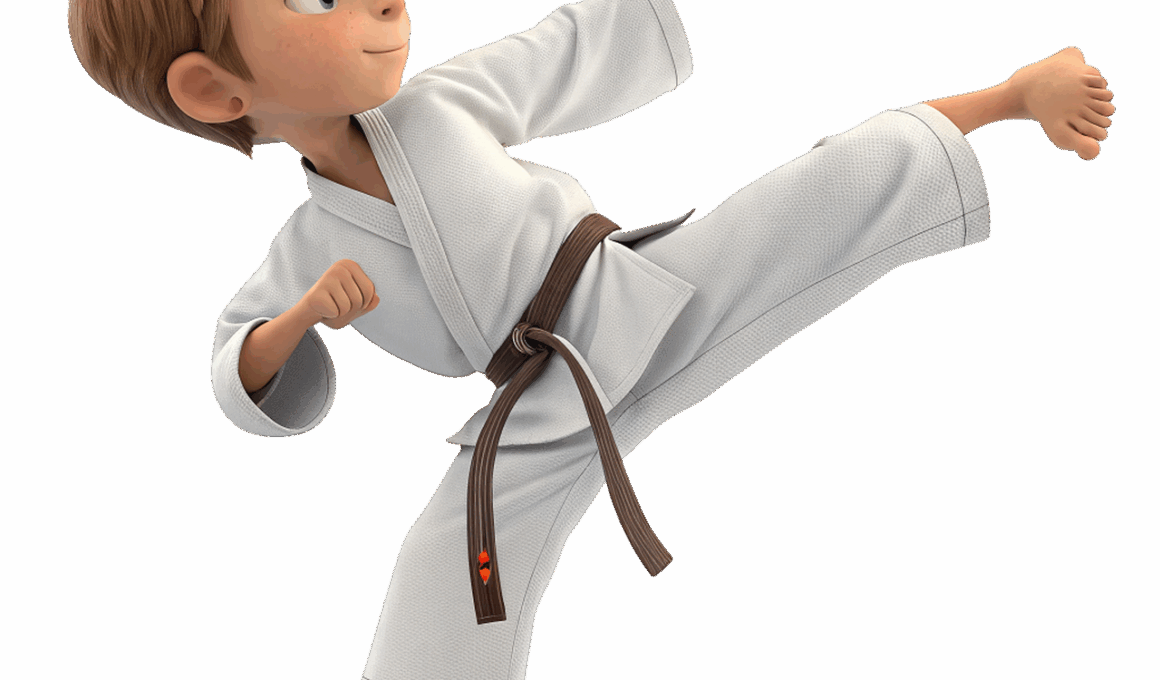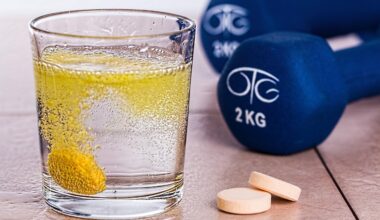Effective Dynamic Stretching for Martial Arts Practitioners
Dynamic stretching is a crucial element of a martial artist’s warm-up routine. It prepares the muscles for high-intensity movements and promotes increased flexibility and mobility. These stretches involve movement-based techniques that help to enhance muscle elasticity and joint mobility. Incorporating dynamic stretching into training can reduce the risk of injury, improve performance, and enhance overall technique. Dynamic stretches differ from static stretches, as they are performed in a controlled manner while continuously moving, often mimicking the movements involved in martial arts. This type of stretching increases blood flow to the muscles, making them more pliable and ready for action. It’s essential for martial artists to identify the different dynamic stretching techniques suitable for their respective disciplines. Practitioners can include exercises such as leg swings, arm circles, and torso twists in their routine, adapting them to their specific needs. The following paragraphs will explore various effective dynamic stretching exercises for martial arts, detailing how to perform them correctly and their benefits. Emphasizing flexibility and mobility will contribute to a martial artist’s effectiveness in training and competition. Practicing these techniques regularly helps in mastering various martial arts forms.
Benefits of Dynamic Stretching
The benefits of dynamic stretching extend far beyond basic flexibility improvement. For martial arts practitioners, engaging in these stretches enhances athletic performance significantly. Improved range of motion resulting from dynamic stretches allows for more fluid, powerful techniques. This increased mobility can lead to enhanced kicking, punching, and grappling abilities, vital in martial arts training and competitions. Additionally, dynamic stretching wakes up the nervous system, making it more responsive and improving overall coordination. This can be particularly beneficial before sparring sessions or competitive events. Another advantage is that dynamic stretching can help to mentally prepare athletes, increasing focus and concentration. Practitioners often find that rhythmically moving through stretches allows them to engage with the motions and visualize their fights or techniques in real-time. Furthermore, dynamic stretching reduces the chance of injury by pinpointing and warming up specific muscle groups actively involved in martial arts. This active form of stretching is preferable to static stretching before a workout because it allows for gradual increased intensity. When preparing for intense physical activity, dynamic stretching will yield the best results compared to other warm-up techniques.
Key Dynamic Stretching Techniques
Several key dynamic stretching techniques are particularly effective for martial artists. These exercises help develop strength, flexibility, and mobility needed for diverse movements. One such technique is the high knee march, where the practitioner lifts their knees towards their chest while marching forward. This targets the hip flexors and warms up the legs effectively. Another beneficial stretch is the walking lunge, which not only stretches the hip flexors but also encourages lower body strength and balance. Similarly, lateral lunges can help improve hip mobility while also engaging the inner thigh muscles. Arm circles are important for warming up the shoulders and improving upper body flexibility essential for blocking and striking. Furthermore, torso rotations are fantastic for loosening the core, facilitating better twist movements during martial arts applications. Incorporating these dynamic stretches into a routine will ensure that martial artists are well-prepared for their training sessions. Practicing these techniques regularly not only enhances range of motion and flexibility but also builds essential muscular strength, ultimately contributing to overall efficiency in diverse martial arts forms.
When performing dynamic stretching, it is vital to prioritize proper technique and form. This ensures that each stretch is effective and minimizes the risk of injury. Martial artists need to start slowly and gradually increase intensity as they progress through their routine. Considerations regarding breath control during dynamic stretches can significantly impact their effectiveness. Breathing deeply and rhythmically throughout the exercises helps maintain focus and steady movement. Engaging the core muscles while stretching also aids in stability and balance during various positions. A common mistake is to rush through dynamic stretches, compromising quality for quantity; instead, practitioners should aim for controlled and intentional movements. Additionally, incorporating varied stretching techniques can prevent monotony in warm-up routines and enhance flexibility. Individual preferences and specific martial arts styles should determine which stretches are emphasized. Some martial artists may find certain stretches more beneficial based on their unique needs, while others might want to incorporate different training tools, such as bands or a partner. Working together with a training partner can help maximize stretching efficacy, showcasing how support can enhance both flexibility and mobility.
Integrating Dynamic Stretching into Training Routines
Integrating dynamic stretching into martial arts training routines can significantly enhance overall effectiveness. It is crucial to identify the optimal time to perform these stretches to maximize benefits. The best moment to incorporate dynamic stretching is during a warm-up, which prepares the muscles for intense training ahead. It’s vital to organize the stretching routine to gradually engage all major muscle groups used in martial arts, ensuring no area is neglected. Starting with lower intensity stretches and progressing to more intensive movements helps achieve the desired outcome of increasing flexibility and range of motion. To maintain engagement and motivation, practitioners should vary their stretching routine, focusing on different techniques at each training session. Incorporation of drills or skill-specific exercises can also benefit martial artists immensely as they prepare for specific techniques. Keeping a structured approach encourages dedication and produces outstanding results over time. Additional tools like mirrors or video analysis may aid martial artists in analyzing their techniques and correcting any flaws that may arise during dynamic stretching practice. A well-rounded and thoughtful approach will promote optimal performance during martial arts activities.
As with any training regimen, it’s essential for martial artists to evaluate the effectiveness of their dynamic stretching routines continually. Staying attentive to how the body responds to various techniques helps in identifying what works best for individual flexibility and mobility needs. Practitioners should maintain a log to track their progress, documenting any improvements noticed in flexibility and overall performance. Having measurable goals can further enhance a martial artist’s motivation and commitment to their stretching regime. Additionally, seeking guidance from coaches or experienced practitioners can provide valuable insights into refining technique and uncovering helpful variations. Failure to listen to one’s body and adapt routines accordingly may increase the risk of injury and hinder development. It’s vital to specialize dynamic stretching routines that align with specific martial arts focuses to yield optimal results. Moreover, practitioners should remember that frequent practice and commitment to dynamic stretching can lead to consistent positive results. Over time, regular implementation will significantly enhance both flexibility and mobility, making martial artists more effective in their movements and techniques.
Conclusion and Best Practices
In conclusion, effective dynamic stretching holds immense significance for martial arts practitioners aiming to enhance flexibility and mobility. Regularly including specific techniques can lead to remarkable improvements in overall athletic performance, reducing injury risks and fine-tuning skills needed for various martial arts. Focused and intentional movement during dynamic stretches allows martial artists to master techniques while mentally preparing for their training. Following proper methods and integrating varied techniques keeps routines fresh and engaging. Ensuring that a proper warm-up is executed can significantly impact training effectiveness, focusing on the major muscle groups involved in martial arts disciplines. Moreover, committing to a continual practice evaluation promotes enhanced awareness of personal needs, paving the way to success. Engaging with coaches or training partners can contribute to better results by providing a support framework during practice. It’s essential to stay patient, with improvements manifesting over time through consistent effort. Ultimately, taking the time to develop a personalized dynamic stretching regimen will yield long-lasting benefits in flexibility, mobility, and artistry during martial arts training.


